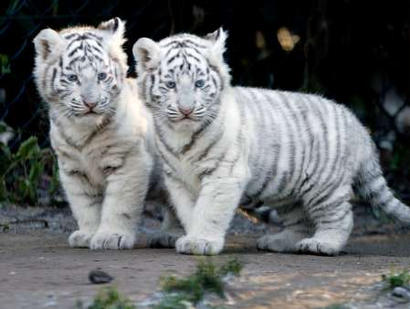The most common translation of
Taijiquan (often just called Tai Chi) is great ultimate fist. This is a pretty hilarious translation because it has little meaning in English. With the popularity of the Ultimate Fighting Championship (UFC), and all the irony this implies, it is high time we actually get a working translation.
To do this I must first explain some difficult terms. There is a saying form the
Taijiquan classics, "Taiji is born
(sheng) of
wuji and is the mother of yin and yang." Immediately we have a problem. Wuji is generally translated "emptiness" or "the ultimate void," and it is a term most commonly associated with Buddhism where several distinct types of emptiness are described. While the term
Taiji is generally associated with Daoism . It is easy to understand how this conflation of Daoist and Buddhist terminology happened. The vocabulary of Buddhists, Daoists and Confucians has been mixed up a lot in promotion of the idea of "the three religions"
(sanjiao). This Sung Dynasty idea, which comes in and out of fashion, recognizes all three religions as important and mutually compatible. It is also the case that many Buddhist terms were translated from Indian languages into Chinese using Daoist terminology, which sometimes led Daoists to then change their vocabulary to distinguish their concepts and practices.
Thus the word that should be used with
taiji is not
wuji, but
huntun.
If you go into a Chinese restaurant and order wanton soup you get a stock made from a combination of beef, chicken, pork and vegetable with dumplings floating in it. Tasting the stock you might exclaim, "hmmm, I can't quite figure out what this is made from, it's a kind of
undifferentiated chaos," And that's what the name wanton means,
completely undifferentiated chaos--
"wanton" in Cantonese,
"huntun" in Mandarin. The soup is a representation of a Daoist cosmological concept; the dumplings are the
clouds floating in chaos.
An experience of totally undifferentiated chaos is, by definition, the closest a human being, with human senses and anatomy, can come to experiencing Dao. It is what we experience when we taste all tastes at once (thus the soup named for it), or we hear all sounds at once, without any differentiation. It is when we see all color and movement simultaneously, without any references to
up and down,
in or out,
light or dark. It is all sensations- hot-cold, moist-dry, hard-soft,--felt simultaneously.
The funny thing about this experience of
huntun is that it is transient. The moment we get there, we start to notice patterns, light-dark, up-down, salty-sweet--
suddenly we are observing qi. But what happens right in between the experience of
huntun and
this
recognition of patterns? That is what we call taiji! It is the moment where things have just begun to differentiate, a place where there is still light inside of dark, an experience where up is still inside of down, where warm is inside of cold. The idea is well captured in the familiar
yinyang symbol.

Now that we have replaced
wuji with the term
huntun, the saying from the
Taijiquan Classics above would read:
"Taiji is born from huntun." This is still problematic because birth implies only one direction.
Sheng, the term being translated here as "born" can also mean "life," and in this case it means "life" in its total sense-- both manifestation and destruction together.
In this cosmology all things are mutually self-re-creating. Creation is an event/experience without agency. All inspiration emerges from
huntun, but also, all ideas die there. All aggression arises from
huntun and it also resolves/returns to
huntun. It is multi-directional. All things which come into existence pass through taiji on their way to manifestation, as do all things going out of existence on their way to disintegration or dispersion.
 Youtube is truly amazing. It will no doubt completely and fundamentally transform marketing for anything that moves or incorporates learning.
Youtube is truly amazing. It will no doubt completely and fundamentally transform marketing for anything that moves or incorporates learning.

 For most people looseness and softness will add more ease to ones normal daily life than flexibility will; activities like brushing one's teeth, picking up children, riding a bike, and getting into a good seat at the movies when we arrive after the lights have gone down.
For most people looseness and softness will add more ease to ones normal daily life than flexibility will; activities like brushing one's teeth, picking up children, riding a bike, and getting into a good seat at the movies when we arrive after the lights have gone down. re parts of one's body that are very soft and other parts which are rigid- a muscle imbalance problem not a softness problem. Softness is a problem when paired with rigidity or when there is so much deficiency in the underlying structure that the muscles no longer function. The development of true strength is aided by softness and built on underlying structure. (What we sometimes call jing.)
re parts of one's body that are very soft and other parts which are rigid- a muscle imbalance problem not a softness problem. Softness is a problem when paired with rigidity or when there is so much deficiency in the underlying structure that the muscles no longer function. The development of true strength is aided by softness and built on underlying structure. (What we sometimes call jing.) of stuff we think of the Nazi doctors. But who knows they could have all been willing members of his work-group.
of stuff we think of the Nazi doctors. But who knows they could have all been willing members of his work-group. Part of my Daoist transmission was on ritual bathing. Proper bathing is very important to good qi circulation. In Chinese the word shou, (the character is in the sidebar) means long life. But another Chinese word is sometimes translated as long life too, yangsheng.
Part of my Daoist transmission was on ritual bathing. Proper bathing is very important to good qi circulation. In Chinese the word shou, (the character is in the sidebar) means long life. But another Chinese word is sometimes translated as long life too, yangsheng. practices. It is in fact the idea that gongfu, nutrition, herbs, incense, bathing, resting, stillness, qigong, bodywork (tuina), and proper sleep, are all connected and meant to be practiced together, as one thing. Sometimes scholars call this daoist hygiene practice. The practice of just one of these with out the others really has no precedent in Chinese history.
practices. It is in fact the idea that gongfu, nutrition, herbs, incense, bathing, resting, stillness, qigong, bodywork (tuina), and proper sleep, are all connected and meant to be practiced together, as one thing. Sometimes scholars call this daoist hygiene practice. The practice of just one of these with out the others really has no precedent in Chinese history. favorite), and a sauna. There is a great spot to sit down and scrub your whole body. They supply everything including a toothbrush, q-tips and a razor. I got a foot acupressure treatment too. Ahhhhhh! It's called
favorite), and a sauna. There is a great spot to sit down and scrub your whole body. They supply everything including a toothbrush, q-tips and a razor. I got a foot acupressure treatment too. Ahhhhhh! It's called  measure 'range' in many different ways, but for the sake of example we can simply think of 'joint range.' When we use a smaller joint range we do it because we are looking for that percentage of joint movement which is most efficient at force transfer. We then practice movement routines which use that smaller range until they become integrated or familiar.
measure 'range' in many different ways, but for the sake of example we can simply think of 'joint range.' When we use a smaller joint range we do it because we are looking for that percentage of joint movement which is most efficient at force transfer. We then practice movement routines which use that smaller range until they become integrated or familiar.